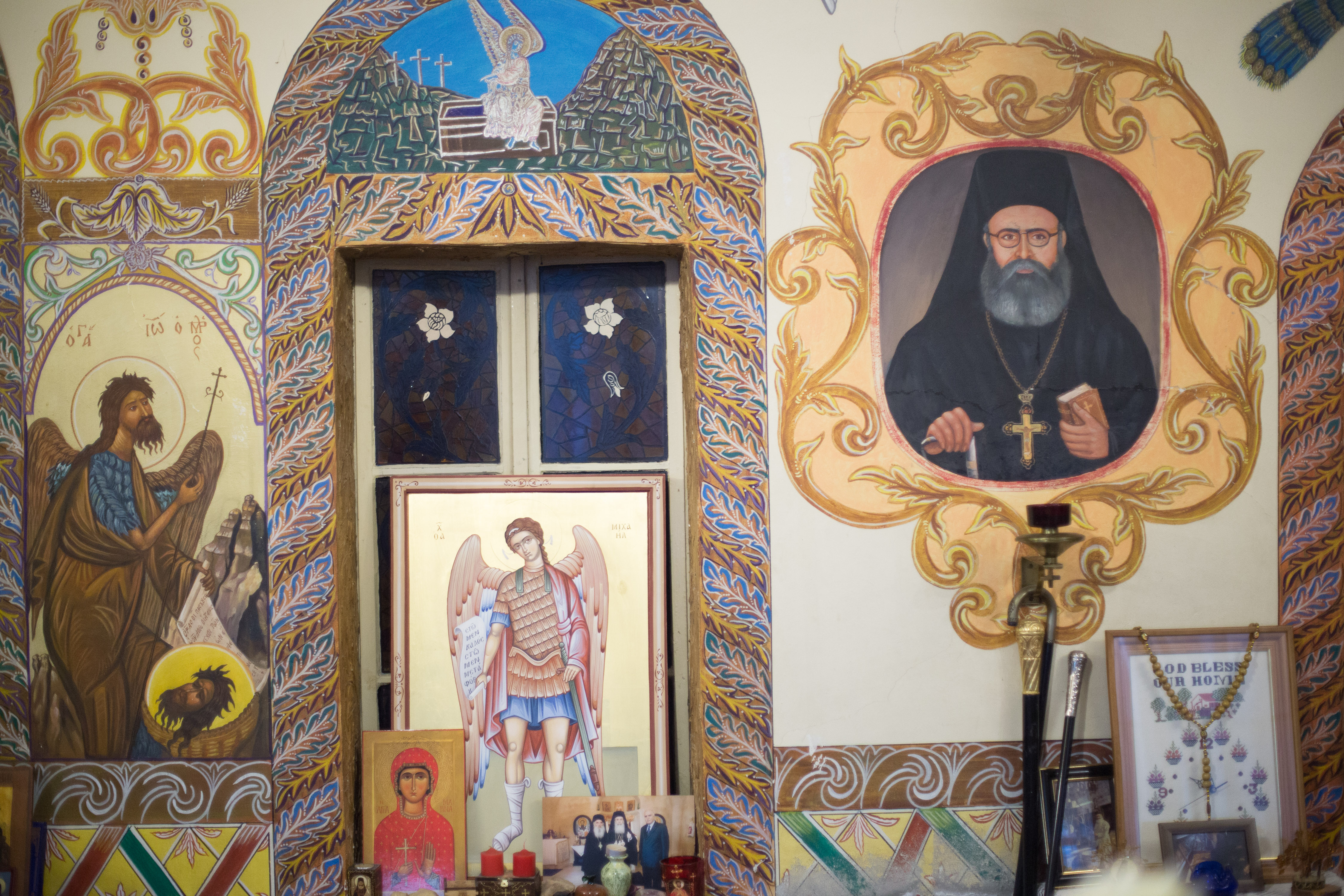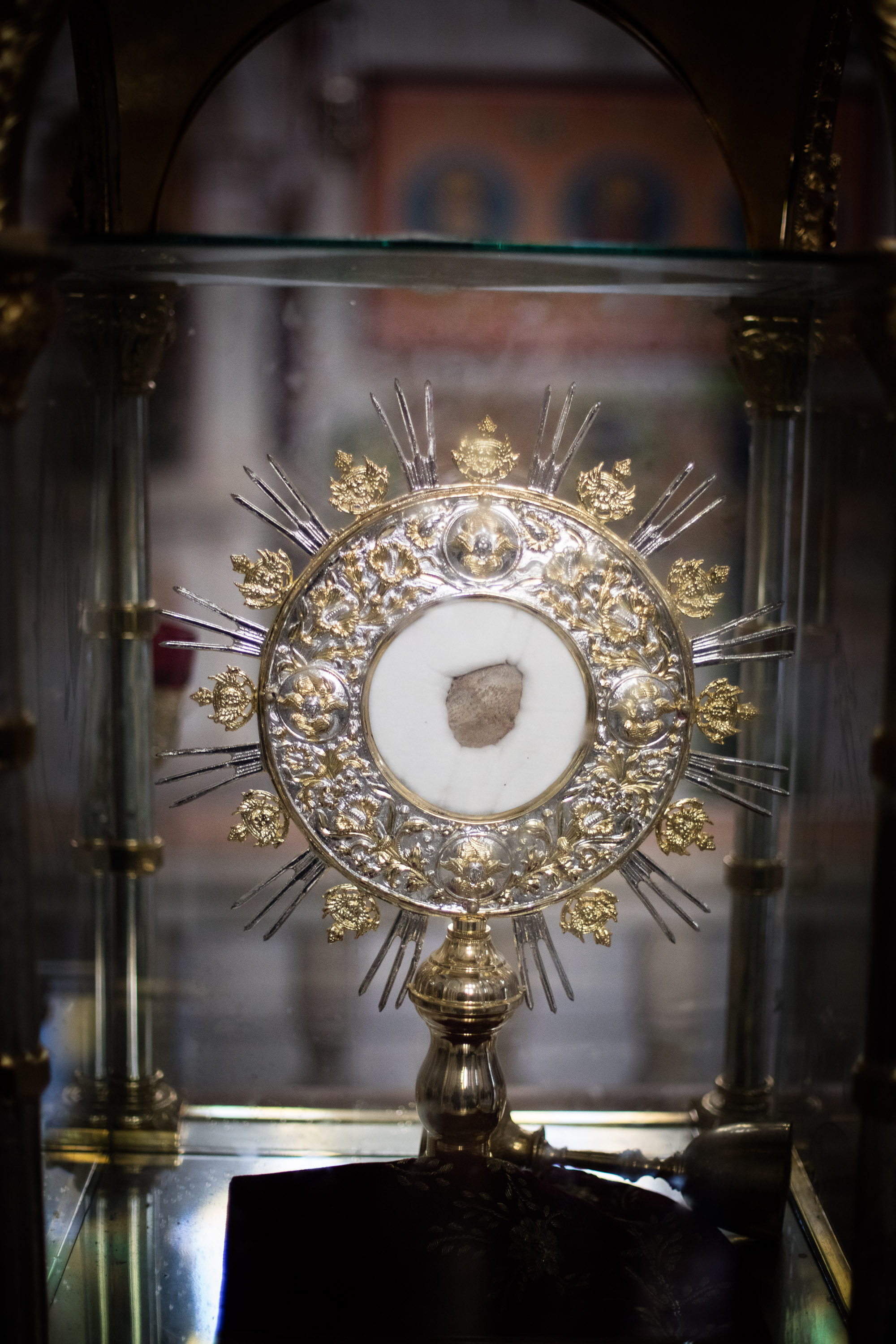Archimandrite Ioustinos is a 77-year-old Greek Orthodox Priest living in the St. Photini Church in Nablus, a Palestinian city in the West Bank. Ioustinos has been assigned the lifelong position of caretaker of Jacob’s Well, an ancient watering hole with connections to several biblical stories. These are his own words, as-told-to Justin Fornal over a series of interviews.
My name is Archimandrite Ioustinos. I have been the hegumen (guardian) of the Saint Photini Church in Nablus, Palestine since 1980. In the crypt of this church is the well that Jacob the Patriarch dug when he returned to Shechem from Paddan Aram (Genesis 33:19). It is also the well where Jesus accepted water from the Samaritan woman, Photini (John 4:5-7). It serves as a special place for people of Islamic, Jewish, and Orthodox Christian faiths.
Videos by VICE
I have been chosen to defend this holy water with my life. The caretaker of the well before me, Philoumenos Hasapis, was a friend. He was murdered with an axe. Many people have tried to kill me, but I am still here. I will care for this well and church as long as God grants me permission to do so.

I was born April 16, 1941 on Ikaria, an island in Greece. When I was young, my home was occupied by the German and Italian Axis forces. This made things very hard for our family and there were not many good moments I remember from my childhood. I have lived in the West Bank most of my life, so the times I have returned to my family’s home in Greece, I felt like a stranger.
My father was a respected engineer on our island. Following in his footsteps was the dream my family had for me. When I was eight years old, I met a very old nun. We would speak often about spiritual things. It was from these conversations that I decided I wanted to be a priest in the Greek Orthodox Church. When I made the announcement to join the priesthood, my family and I did not speak for six years.
I came to Palestine in 1960. I served as a priest in Bethlehem, then in Nisf Jubeil. For many years, I have served as overseer for this region. During these years I learned to speak Arabic, English, and picked up a bit of Hebrew. In 1979, I thought I would be chosen to serve as guardian of Jacob’s Well, but my friend and contemporary was chosen for this responsibility. On November 29 of that same year, a madman named Asher Raby came onto the property. He threw a hand grenade into the church. The explosion caused destruction and fire. Philoumenos ran from the church and the madman fell upon him with an axe and murdered him. After this, the killer escaped.
Following the murder, things were very bad for Jacob’s Well. The church was locked for three months and the keys were taken to Jerusalem. I did not want to be the guardian as I was afraid the same thing would happen to me that happened to my friend Philoumenos. One night I had a dream and in the dream I saw a vision of myself repairing the church and serving as the guardian for many years. I went to Jerusalem, got the keys, and soon began picking up the pieces.

In 1982, the madman Raby returned again and attacked one of our nuns with an axe. She was terribly injured. He fled but returned soon after, climbed the wall surrounding the church grounds with a ladder, and came in with hand grenades and his killing axe. He came running at me with the axe. I resisted the attack and broke his leg. He was arrested.
Raby was 37 years old at the time and lived in Tel-Aviv. He was a heterodox Jewish man who believed our church did not belong on this site. He had also killed several other people throughout Israel (unrelated to our church).
Once Raby was captured, everything was very good for Jacob’s Well. We started to clean up the church and make it beautiful again. I built an office and monastery and started to paint murals on the walls. In 1998, I was able to get a building permit from Yasser Arafat, which enabled us to launch a major construction project to rebuild the church structurally.
In the year 2000 came the second Intifada (Israeli-Palestinian conflict). We were suffering very badly. I could not leave these grounds for many months. During this time, I spent most of my days painting murals and praying. I prayed to God and to Philoumenos’s spirit to help protect the church. An Israeli tank fired at our gate but it did not break. They dropped five bombs on the grounds but none of them went off. I am thankful that we were under supervision of the saints.
In 2009, Philoumenos was canonized by the Holy and Sacred Synod of the Patriarchate of Jerusalem, and is now a saint. When we exhumed his body. It was still intact. It had not rotted even though he had been dead for almost 30 years. The body still exuded a most beautiful fragrance. From pieces of his corpse we have created several relics that have been sent to different churches around the world.

We have other relics in this very church as well. As you know, this church is called is called St. Photini. In front of the altar, we have a piece of Photini’s skull on display.
In the first century, Jesus was walking on his voyage from Judea to Galilee and had to come through Nablus, which at that time was called Sychar. Jesus stopped by this well to rest and was very thirsty. While he was sitting there, a woman approached the well to get water. At the time, the well was property of the Samaritan people, so he asked her permission to have a drink. It was not appropriate for a lone Samaritan woman to be associating with a Jewish man, so the woman said to him, “How is it that you, a Jew, ask a drink of me, a woman of Samaria?” They had a short discussion and Jesus concluded, “Everyone who drinks of this water will be thirsty again, but those who drink of the water that I will give them will never be thirsty. The water that I will give will become in them a spring of water gushing up to eternal life.”
The woman said to him, “Sir, give me this water, so that I may never be thirsty or have to keep coming here to draw water.”
This woman, whose original name is not known, believed in the Messiah and thus she was christened as Photini, “the enlightened one.” After her encounter with Jesus, Photini travelled extensively, speaking the gospel of Christ and making many converts. She was brought in front of the Roman Emperor Nero to be persecuted for her acts. Photini refused to denounce her beliefs and was tortured and killed as a martyr.
We have worked very hard to keep this holy site active and beautiful. I am hoping in my lifetime to have the same good fortune in resurrecting the Church of St. John the Baptist that sits in ruins in the nearby town of Sebastiya. The original church was built on the site where John was beheaded by Herod Antipas. Almost all sites throughout the holy land create some sort of contention. Recently men from the Balata refugee camp shot machine guns at our door. I believe outsiders are manipulating these negative situations where there should be none.

I have built my tomb and created a mosaic of myself above it. Should it be my time to die, I am ready. This water that I protect is crystal clear, delicious and sacred. I have seen it perform many miracles in my lifetime. I drink it every day and bless all of the pilgrims who come to this site.
Friends who visit me drink the water for good health.
Sign up for our newsletter to get the best of VICE delivered to your inbox daily.
Follow Justin Fornal on Twitter.




